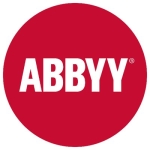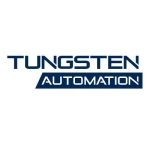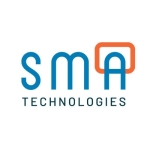What is our primary use case?
The beauty of RPA is that it has many different use cases. We use the product as a standalone and as part of a bigger solution. Obviously, the tool itself is designed to automate activities that humans would do. But as the tool is getting smarter, we are able to do more types of activities.
There were two big challenges in the early days. One was the complexity of the rules that you needed to adopt for a particular task and the other was the type of data that was being used as part of the business process. As we've gone along, the product has evolved and allows us to do more of the business process.
How has it helped my organization?
We are able to offer more automation to a business process than we could before. It's all about the business process and how much of that can be automated and what still needs to be handled manually. UiPath gives us the ability to do more with automation and need less human involvement.
We used UiPath to automate processes for a good cause, free of charge, during the COVID pandemic. We used it to build automations that would take care of activities that nurses and doctors were having to perform, to free up their time to treat patients. Reducing the admin they normally might have had to do, rather than being front-of-house and dealing with very ill patients, speaks volumes for itself. We freed up time for our nurses and doctors to treat very sick patients.
When it comes to reducing the on-premises footprint, what we've seen over the last two or three years, with the pandemic, is the move to the cloud being accelerated. The whole digital agenda was accelerated. What we're seeing now is that most of the organizations we work with are more open to using a cloud solution. However, it depends on each organization. Some of our government organizations are not allowed to use the cloud. They have to use on-premises solutions because of strict data rules. But more companies are now open to using the cloud and that has an impact on the total cost of ownership. They're not having to invest in services and that helps reduce TCO.
AI models are now being pre-trained. There's a risk there because, obviously, you are using someone else's data and someone else's bias. But if you put those aside and use the pre-trained models, it's going to reduce the time to value because you're not having to train models. You've got something that can be run out-of-the-box. To be honest, we will always build our own models rather than exclusively use UiPath's. For instance, they have an email reader. We tend to use their model in conjunction with our own and that has helped us reduce development time on our AI models and our training.
On the subject of human error, anytime you ask a human to do an admin activity where they're typing in data, there's an opportunity for human error to creep in. And that can cause catastrophic events, downstream. Where you have an automation that is guaranteed to enter data that is 100 percent correct, you're always going to reduce human error.
Automation can also be used where a decision is made. Sometimes, human decisions can be fallible. If you have a decision being made by an AI model, it's not going to have human bias. It can have other biases built-in, but you can see an improvement in some decision-making as well. What we have to understand here is the introduction of AI into RPA is still in its infancy and there's a long way to go in this area. But there are definitely improvements being made by the introduction of artificial intelligence. It depends on how you use it and how smart your understanding of it is, as well.
Automation is all about trying to reduce the touch time of a human in a process to free up their time. If the automation is implemented smartly, it does so. If it's poorly implemented, you can end up with people being given so many exceptions that the bot actually becomes redundant. But as a rule of thumb, of course, it does free up peoples' time.
Similarly, if it's deployed smartly there are some benefits in terms of cost savings. However, we're not using it because it's saving costs. We are using it for our staff who don't want to do manual activities. It's not just about dollars and saving time. It's also about our staff and not having to do menial tasks, which can be demotivating.
What is most valuable?
It's not about the tool, it's about the business process and which component works best. The most valuable feature really depends on the use case. My favorite now is Document Understanding and the AI models that are being pre-trained. That's allowing us to do more, out-of-the-box, without having to do custom programming.
When I ask my developers which product they would like to use when we are doing RPA, they always say UiPath because of its closeness to Microsoft's .NET. Again, what UiPath are doing is enabling more out-of-the-box functionality without having to do customization and coding. The developers, and I, would say that it's getting easier to use for simple automations. It still requires planning and thinking for more complex automations, but you are able to do more with fewer skills.
UiPath has something called Citizen Developers, which is where they encourage people to build their own robots and the functionality available is greater. Whether that's a good thing or a bad thing is a question for governance.
UiPath's user community was one of the strongest aspects from an adoption point of view in the early days. The forums, the community, were always something that they invested heavily in, and that was a smart thing to do. The community is still strong. They have a Community addition and the feedback we get from some of our customers, when they first play with this, is that it's a friendly community. People are encouraged to play with UiPath, and if they get stuck, the community is willing to provide them with advice and guidance in a friendly way. Not all communities are the same, let's put it that way.
We actually teach the UiPath Academy courses. We are a UiPath-accredited trainer, but we have, at times, with smaller organizations, suggested that they take some of the training themselves. It's another great area of UiPath, in addition to the community. Their training is available free of charge. That has always been a strong point as well.
What needs improvement?
Their licensing is poorly constructed. It's too complicated and not well thought out. They also outsourced their support model, which sadly has become less friendly and more automated.
It's very much in the early days, but another area they can continue to look at is bots building robots—the ability to take a task capture and turn that into an automation. There are always concerns over that: Who's going to police the police?
For how long have I used the solution?
I've been using UiPath since before it was called UiPath. It was previously called DeskOver. I worked for Capgemini and I worked with the product when the company consisted of 30 people in a room in the very early days. Capgemini adopted DeskOver and then it became UiPath as a growth partner. So I have been using it for coming up on 10 years.
What do I think about the stability of the solution?
UiPath is stable. Like any product in the early days, they were updating all of the time. That used to not sit well with our bigger customers because of their update plans. As the product has matured, it's become more stable and the release plan has become structured. You now get four updates a year. It has become more mature.
What do I think about the scalability of the solution?
It's scalable.
The environments that it can be used in can be very complex, such as "multi-tenant," where a tenant is the protection of data from Orchestrator, where you have segregation or air gaps. We've done some projects with a defense ministry that are very complex and we've done some very simple ones.
Most organizations start small. There will probably be a pilot with a cut-down version of what is needed. As they grow and scale, they will invest in more tenants and in more infrastructure and more components of the platform.
How are customer service and support?
I would rate their support at seven out of 10, but the dial is going the wrong way. Because they've outsourced their support, you're no longer dealing with the original product team. I had a very good relationship with the product team where I could almost pick up the phone if there were some proper technical problems.
Now, that is gone and we're having to deal with a third party. As UiPath have grown, they've needed to focus on their core areas and outsource other areas. But it's getting harder to get good quality support because my customers are no longer dealing with them directly, they're having to go through a third party.
How would you rate customer service and support?
Which solution did I use previously and why did I switch?
We started off with Blue Prism, which was originally designed, and still is, for back-office processes. What we used DeskOver for was front-office automations, almost like "your little buddy who sits on your desktop." As UiPath grew, it started to erode the Blue Prism market because it offered the ability to do both front-office and back-office automations. That's why it became number one. It recognized that there were two distinct markets: front-office and back-office. Blue Prism always has done back-office, and successfully, but never offered the ability to do front-office. Customers didn't want to invest in two different technologies as that would be too expensive. That's why UiPath stole the match and has never looked back.
Back then, 10 years ago, there wasn't much else to choose from. It was really "macros on steroids." The market was very different. It was Blue Prism or some of what were very young companies. Automation Anywhere was just coming in as well.
But at Capgemini, we recognized UiPath, and we liked Daniel Dines, who was their CEO at the time and is now Co-CEO. We liked his enthusiasm and we liked the price point as well. They were from Romania, they were cheap, and they were eager. We were able to work with a company that, at that time, was very competitively priced. And we were able to get them to start building stuff that we wanted as well, as Capgemini was one of the big six. We had a lot of control over their roadmap in the early days.
How was the initial setup?
Each organization we work with will have different design principles. As a general rule of thumb, we encourage investment in the cloud license model because it reduces the time that it takes to actually get the implementation up and running, and it simplifies things when it comes to TCO. However, there are organizations that are constrained by security, and therefore they can't go down that route.
I'm an architect by trade and my job is to oversee complex delivery and deployments. It's all about the architecture. An architect needs to work with the client, in the beginning, to come up with a plan and a solution that's going to be fit for purpose. In addition to architects, you need a project manager, some engineers to actually do the implementation, and you're probably going to need a tester to test and commission the environment.
The initial deployment has gotten better. When Orchestrator, which is the main administrative console, is built-in as part of the cloud offering, rather than having it locally, it makes a big difference. The cloud has made the time to set up a pilot and deploy into production much shorter than it used to be with on-premises.
What was our ROI?
Most IT projects probably take three to six months to deliver a success. Whether or not the payback happens straight away depends on the investment costs. The benefit of UiPath and RPA is the rapidity with which you can get automation into production and beginning to pay back. RPA has always been liked by people in the business because it is a rapid deployment rather than something more strategic that can take one, two, three, and sometimes, five years if it's a very large IT program of work.
ROI isn't just about the dollar. It can be other things as well. If a program of work with RPA and UiPath is deployed smartly, you can see a decent ROI. But that ROI also depends on the declarations by the business involved. How many times do they execute the process and how long does it take to do it? How many exceptions are there? How many people are involved in that process?
Business often thinks that volumes are higher than they actually are, and they may forget that other people may have to be drafted in if there are peak periods. Due diligence in building a business case is important. What you also need to do is revisit it six months later or a year later: What did we declare? What did we actually hit? Did the bot fall over because of X, Y, or Z? It is a continuous improvement process, as well as ROI. If you get the two working correctly, you get a stronger ROI.
What we find is that some businesses who don't use our consultancy skills will try and do it themselves, and they will come across some of the pitfalls that we are fully aware of, but they may not be aware of because they're learning, and that has a big impact on ROI. If they try to go after a business process that's very complex, at the beginning, without the right skills in hand, they can suddenly find themselves in a downward spiral from a development point of view, where costs and time are overrunning. Before they know it, the declaration they set has passed and they've not been able to hit those targets. When that happens you start to see an erosion of confidence from the business side as well. It all comes together. It's all about strategic understanding and technical know-how.
What's my experience with pricing, setup cost, and licensing?
We now have the challenge of cost. It depends on what you want to do. If you want a very simple robot to execute normal front-office transactions, I would recommend Microsoft Power Automate because it's free. If you are investing in more complex things, then I would always recommend UiPath.
UiPath is starting to price itself out of the market. It's getting expensive. That's fine if they continue to push the envelope of what they offer, but it's all about perception. And the perception over the last two years with my customers is that it's expensive. I trust it, but it's expensive.
We're seeing year-on-year price increases. There's a price point they're getting to that is about the value and they need to be very careful about that.
UiPath, as an organization, has changed massively. When it IPO'ed it was a Romanian company and very much a European company. Now, it's an American company with American values, and I think there is a misunderstanding of the European market compared to the American market.
What other advice do I have?
In terms of implementing end-to-end automation, it depends on the process. We can do more with the advancements that I've mentioned, but every business process is different. I always say to my team, "This isn't about the tail wagging the dog. It's not the technology, it's the business process, and whatever tool is right, whatever fits." There are still exceptions that need to be handled by people so we're probably not there yet with end-to-end automation.
Most good-sized business processes have business exceptions that require involvement from people. It's what we call "human in the loop." Two or three years ago it was 80/20 between automation and human involvement. We're now probably at 85/15 or 90/10, with more of the process being automated without human involvement. That's because there are smarter bots using AI—the brain—to execute automation tasks that previously had to be handed back to a human for decision-making or some other activity.
On its own, UiPath doesn't speed up digital transformation. It's a tool. It helps, it's a contributor, but as a standalone, it doesn't. It needs other things.
I had a quick look back at what their offering was in 2019 and what it is today. That's a good way of looking at how well they've listened to their customers. They've been smart in not just providing RPA. All their components now are far more than just RPA.
They've recognized one of the biggest areas is process identification, that whole journey of identifying an opportunity and taking it through the life cycle, with things like Automation Hub.
Generally, the response I get from my customers is they're impressed with the number of solutions that are available under UiPath's Enterprise platform.
Disclosure: My company has a business relationship with this vendor other than being a customer. Reseller






















